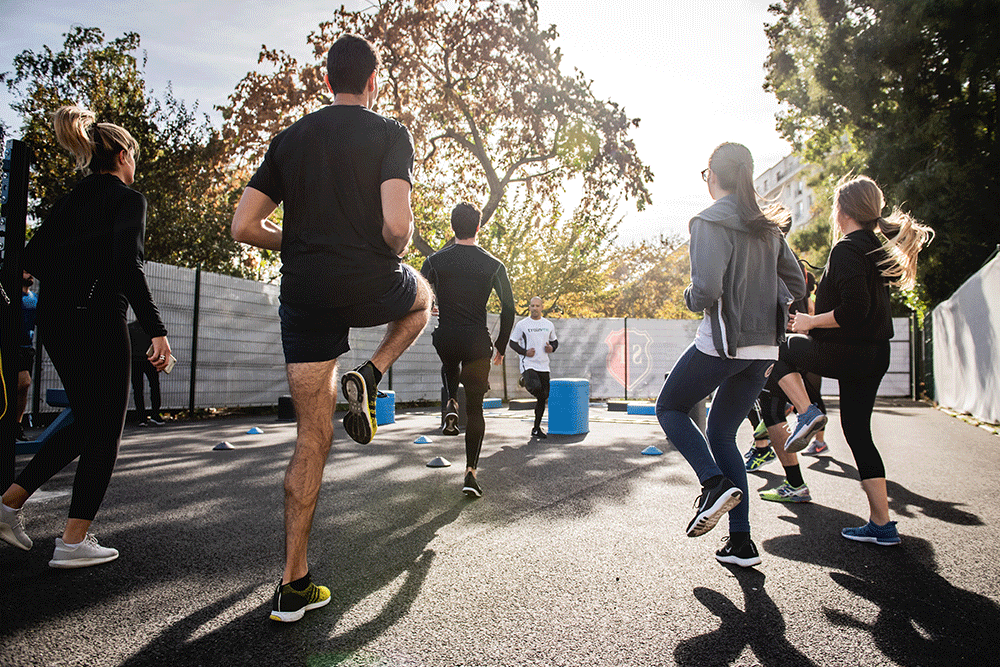Why Warm-Up Exercises Matter:
Increased Blood Flow: Engaging in a warm-up routine helps increase blood flow to the muscles, gradually raising your heart rate and body temperature. This process ensures that oxygen and nutrients are delivered to the working muscles, preparing them for the upcoming physical demands.
Improved Flexibility and Range of Motion: Warm-up exercises help loosen up the joints, ligaments, and tendons, improving flexibility and range of motion. This increased mobility allows for better movement patterns and reduces the risk of strains or sprains during exercise.
Enhanced Muscle Performance: Warm-ups help activate and engage the muscles that will be used during the main workout. This activation prepares the muscles to perform more efficiently and effectively, resulting in improved strength, power, and endurance.
Injury Prevention: By gradually increasing blood flow, warming up helps raise the body’s core temperature. This increase in temperature improves muscle elasticity and reduces the risk of muscle tears or strains. Additionally, warming up prepares the mind and body for the physical demands, reducing the likelihood of accidents or mishaps during exercise.
Mental Preparation: Warm-up exercises provide an opportunity to mentally prepare for the upcoming workout or physical activity. It allows you to focus your mind, improve concentration, and get into the right mindset for optimal performance.
Creating an Effective Warm-Up Routine:
Start with General Cardiovascular Activity: Begin your warm-up with 5-10 minutes of light cardiovascular exercise such as brisk walking, jogging, or cycling. This increases blood flow, elevates the heart rate, and gradually raises body temperature.
Dynamic Stretches: Perform dynamic stretches that involve controlled movements that mimic the motions of the main exercise or sport. These stretches help improve flexibility, increase joint mobility, and activate the muscles. Examples include arm circles, leg swings, walking lunges, or hip rotations.
Sport-Specific Movements: Incorporate sport-specific movements or exercises that mimic the actions you will be performing during your main workout or activity. For instance, if you’re a basketball player, include dribbling or shooting drills. This helps prime the neuromuscular system, improving coordination and movement patterns.
Activation Exercises: Include exercises that activate and engage the major muscle groups you will be using. This can involve bodyweight exercises like squats, push-ups, or lunges. Activation exercises stimulate the muscles and prepare them for the upcoming workload.
Gradually Increase Intensity: As you progress through your warm-up routine, gradually increase the intensity to further prepare your body for the main workout. This can include increasing the speed, resistance, or complexity of the movements.
Mental Focus: Use the warm-up period to mentally focus and visualize success in your upcoming workout or activity. Concentrate on your goals, technique, and positive affirmations to boost confidence and motivation.
Stay Hydrated: Remember to hydrate adequately before and during your warm-up. Proper hydration supports overall performance, prevents muscle cramps, and ensures optimal bodily functions.
Customize Based on Activity: Adjust your warm-up routine according to the type of activity you’ll be performing. For example, if you’re about to engage in heavy weightlifting, include specific warm-up sets with lighter weights to prepare your muscles and joints.
Remember, warm-up exercises should be tailored to your individual needs, fitness level, and the specific demands of your workout or activity. Be mindful of any pre-existing injuries or limitations and modify your warm-up accordingly. Spending 10-15 minutes on a proper warm-up can significantly enhance your performance, reduce the risk of injuries, and maximize the benefits of your exercise routine. So, make it a priority to incorporate a thorough warm-up before each workout, and enjoy the rewards of a well-prepared body and mind.

Jass
Jass earned her bachelor’s degree in Computer Science, transitioning into a profession as a content writer. With a keen mastery of words, she takes pleasure in expressing her thoughts and ideas creatively. Her ability to captivate audiences with her imaginative write-ups stands out as one of her notable strengths.





0 Comments